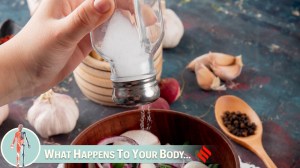Betting big on bananas
Orissa plans to raise per-hectare harvest from about 8 tonnes to 33 tonnes in the next decade; to plant Grand Naine banana rhizomes over 1,500 hectares
It is the worlds favourite fruit and India is its largest producer,contributing to 23 per cent of the world production. It gives an instant and sustainable boost of energy and is a good source of potassium,fibre,carrying 110 calories each and approximately six vitamins and 11 minerals.
After rooting for mango and coconut,the Orissa government now has big plans for bananas to supplement the income of its rural households.
With an annual production of 4.88 lakh tonnes,Orissa is ranked at No 8 among all banana producing states. Though it has over 26,000 hectares of its area under banana cultivation,the productivity is quite low in Orissa,which now plans to raise the per-hectare harvest from the current 7-8 tonnes to the national average of 33 tonnes in the next decade.
With this in mind,the states horticulture department is now planning to plant banana rhizomes over 1,500 hectares,up from 500 hectares last year. But it is not the local yellow-skinned varieties that the department is keen on. Rather,it is betting big on Grand Naine tissue culture bananas,which is now a rage in Maharashtra the biggest producer of the fruit in India. Unlike the local varieties such as Champa,Patkapura and Batisa,the Grand Naine bananas are longer in shape and their skin remains green even after they ripen.
While local varieties take about a year to harvest after they are planted,the tissue culture bananas are ready for harvest at least a month before. With more than 90 per cent fruiting in these plants,the farmers have less risks to encounter, says Horticulture Director Sanjiv Chadha.
Banana is essentially a tropical plant requiring a warm and humid climate. It also requires a lot of irrigation soon after plantation and mostly in summers when temperatures touch 40 degrees Celsius or more in most parts of the state. Besides,banana being very sensitive to diseases such as Panama Wilt and Banana Bunchy Top,farmers have to be on their toes while planting banana rhizomes. In the Grand Naine variety,the virus indexing have been done taking care of such diseases in the laboratory itself, says Chadha.
As marketing is the biggest problem for farmers,the department has now started a policy of complete buy-back arrangement,in which companies would buy all the ripe bananas from the growers. The farmers who used to get Rs 3-4 per kg would get Rs 6-7 per kg for their produce,with little risk of the bananas rotting away.
But growing tissue culture banana is expensive as one has to spend around Rs 1.2 lakh a hectare,compared to Rs 60-70,000 per hectare for local varieties. In tissue culture variety,fertilisers and drip irrigation play a big role. That add to the costs, says Sushant Ranjan Das,a climatologist of the department,who is overseeing the state governments plan of market-farmer link-up.
To minimise the costs for farmers,the department is now giving Rs 40,603 per hectare as subsidy. But the cost is offset by higher production as each rib in tissue culture plants would have 15-20 kg more bananas than the conventional ones, says Das.
Chadha says the biggest challenge is to convince the banana farmers to go for tissue culture banana as it would fetch them better prices. Once Orissa becomes one of the top-five banana producing states,traders in metros like Delhi and Kolkata would get their bananas from here than Mumbai as it would save them transportation cost.
- 01
- 02
- 03
- 04
- 05






























